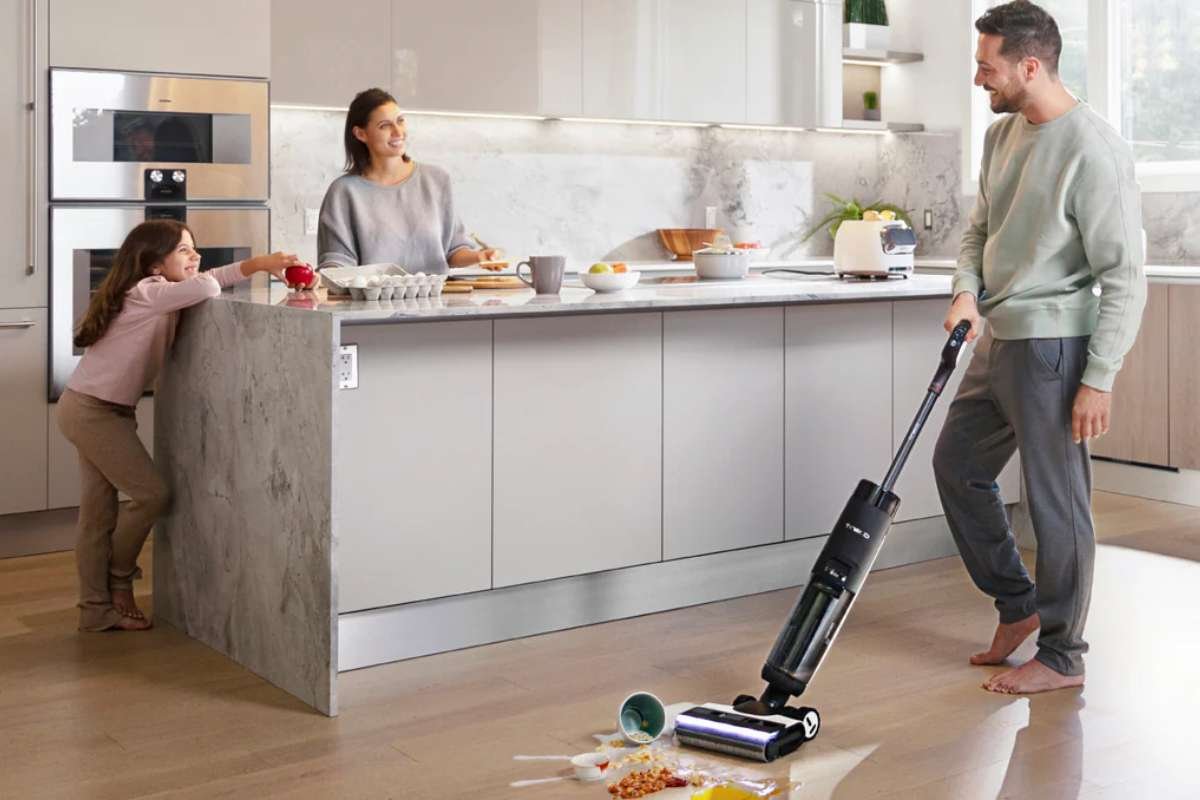Pool maintenance has long been a thorn in the side of homeowners, demanding hours of manual labor, constant attention, and physical effort. The traditional pool brush and vacuum routine not only consumes precious weekend hours but often delivers inconsistent results, leaving stubborn debris and algae buildup. Enter robotic inground pool cleaners – the revolutionary solution that’s transforming pool maintenance from a dreaded chore into a hands-off experience. These intelligent devices combine cutting-edge filtration systems, advanced mobility technology, and user-friendly features to deliver professional-grade cleaning without the hassle.
By leveraging smart navigation and powerful suction capabilities, robotic cleaners tackle everything from fine particles to larger debris while adapting to any pool shape or surface. In this comprehensive guide, we’ll explore how these innovative machines work, their key benefits, and how to choose the perfect cleaner for your pool, helping you reclaim your time and enjoy a consistently pristine swimming environment.
The Evolution of Pool Cleaning Technology

Pool cleaning has come a long way from its humble beginnings with manual brushes and nets. In the early days, homeowners spent countless hours scrubbing pool walls and fishing out debris by hand. The 1960s saw the introduction of basic suction-side cleaners that attached to pool skimmers, offering some automation but requiring constant pool pump operation and frequent maintenance. Pressure-side cleaners emerged in the 1970s, providing better cleaning capabilities but still demanding significant energy usage and setup time. The true breakthrough came in the late 1980s with the first robotic pool cleaners, which operated independently from the pool’s filtration system. These early robots, while revolutionary, were expensive and relatively basic in their capabilities.
Modern robotic cleaners represent a quantum leap forward, incorporating advanced microprocessors, energy-efficient motors, and sophisticated filtration systems. Today’s units consume up to 83% less energy than traditional cleaning methods, while delivering superior cleaning performance through AI-powered navigation and smart sensing technology. This evolution reflects the industry’s shift toward sustainable, efficient, and truly automated pool maintenance solutions.
Core Features of Robotic Inground Pool Cleaners

1. Smart Filtration Systems
Modern robotic pool cleaners employ advanced micro-filtration technology capable of capturing particles as small as 2 microns, far surpassing traditional pool filters. These systems utilize multi-layer mesh designs that efficiently trap both fine sediment and larger debris while maintaining consistent water flow. The intelligent debris detection sensors automatically adjust suction power when encountering concentrated dirt areas, ensuring optimal cleaning performance. Most units feature self-cleaning mechanisms that prevent filter clogging and maintain peak efficiency throughout the cleaning cycle.
2. Adaptive Mobility Technology
Sophisticated gyroscopic sensors and advanced algorithms enable these devices to navigate pools with remarkable precision. The cleaners utilize pressure sensors and mapping technology to detect walls, stairs, and obstacles, automatically adjusting their path to ensure complete coverage. Multi-directional drive systems allow seamless wall climbing up to the waterline, while smart scanning technology creates efficient cleaning patterns that minimize redundant passes and optimize energy usage.
3. Hassle-Free Operation Design
Engineering innovations have eliminated common maintenance headaches through features like swivel cord technology that prevents cable tangling during operation. Quick-release filter cartridges enable debris disposal without getting hands dirty, while programmable cleaning schedules allow true set-and-forget operation. Built-in safety features include automatic shut-off when lifted from water and beach entry detection to prevent damage. The plug-and-play design requires no complicated installation or connection to existing pool systems.
Benefits of Robotic Pool Cleaners for Homeowners
➤ Time and Labor Savings
Robotic pool cleaners dramatically reduce maintenance time from 4-5 hours weekly to just 15 minutes of oversight. While manual cleaning requires constant physical effort, moving poles and vacuum heads, robotic cleaners operate autonomously after a simple button press. Leading models like the iGarden series offer smartphone control, allowing schedule adjustments and cleaning mode selection from anywhere. This hands-off operation frees up weekends previously spent on pool maintenance.
➤ Enhanced Cleaning Performance
These devices achieve 99% debris removal through systematic scanning patterns that cover every inch of pool surfaces. Their powerful scrubbing brushes and high-suction motors eliminate stubborn algae and biofilm that manual cleaning often misses. Independent testing shows robotic cleaners capture up to 95% more fine particles compared to manual vacuuming. The consistent cleaning cycles prevent debris accumulation and maintain crystal-clear water quality between uses.
➤ Long-Term Cost Efficiency
Despite the initial investment, robotic cleaners deliver significant savings over time. They use up to 83% less energy than pressure-side cleaners by operating independently from the pool’s pump system. The improved filtration reduces chemical consumption by up to 30% annually. Additionally, these devices extend the life of the pool’s main filtration system by reducing its workload. Many users report complete return on investment within two swimming seasons through reduced maintenance costs and chemical savings.
Choosing Your Ideal Robotic Pool Cleaner

i) Pool-Specific Considerations
Selecting a robotic pool cleaner begins with evaluating your pool’s specific characteristics. In-ground pools require cleaners with stronger climbing abilities and extended cord lengths, while above-ground models need lighter designs with shorter cables. Pool size directly impacts cleaning cycle duration and coverage patterns, with larger pools benefiting from cleaners featuring extended runtime capabilities. Surface materials also play a crucial role – vinyl liners need gentler brush designs, while concrete and tile surfaces demand more aggressive scrubbing power.
ii) Feature Prioritization Guide
Essential features include reliable navigation systems, efficient filtration, and basic scheduling capabilities. Premium features worth considering are WiFi connectivity, smartphone control, and advanced cleaning patterns. When assessing filtration needs, consider local environmental factors like tree coverage and dust levels. Mobility requirements should account for pool obstacles like stairs, beach entries, and complex corners. Create a checklist prioritizing features based on your specific cleaning challenges and automation preferences.
iii) Brand and Model Comparison
Leading manufacturers consistently deliver reliable performance through extensive testing and customer support networks. Focus on brands with established reputations for durability and after-sales service. Compare warranty terms, particularly coverage length and parts inclusion. Evaluate price-performance ratios by considering cleaning efficiency, energy consumption, and maintenance requirements. Look for models with readily available replacement parts and local service centers to ensure long-term support.
Step-by-Step Guide to Effortless Maintenance
➤ Initial Setup and Programming
Setting up your robotic pool cleaner begins with carefully unpacking all components and conducting a visual inspection. Connect the power supply unit to a GFCI-protected outlet at least 12 feet from the pool edge. Before first use, adjust the floating cable length to match your pool size, preventing unnecessary tangling. Access the control panel to configure basic settings like cleaning duration, schedule, and cleaning pattern. Most units offer quick-start programs ideal for standard pools, while advanced models allow custom pattern programming through smartphone apps.
➤ Operational Best Practices
For optimal performance, establish a regular cleaning schedule based on pool usage patterns – typically 2-3 times per week during peak season. Test water chemistry before each cleaning cycle, ensuring pH levels between 7.2-7.6 and proper sanitizer levels to protect cleaner components. Remove large debris like leaves or branches with a skimmer net before deployment, maximizing the robot’s efficiency. Position the power unit away from direct sunlight and rainfall exposure during operation.
➤ Routine Maintenance Procedures

Clean filter cartridges after every cleaning cycle by removing them from the unit and spraying with a garden hose until water runs clear. Monthly maintenance should include inspecting brush rollers for wear and cleaning the tracks of any accumulated debris. Check cable integrity regularly for signs of wear or damage. For off-season storage, thoroughly clean all components, dry completely, and store the unit in a climate-controlled space using the provided storage caddy. Perform a deep cleaning of filters using manufacturer-recommended cleaning solutions every three months to prevent mineral buildup and maintain optimal filtration efficiency.
The Future of Automated Pool Maintenance
The advent of robotic pool cleaners has revolutionized pool maintenance, transforming it from a time-consuming burden into an effortless experience. These intelligent devices deliver unprecedented cleaning efficiency through their advanced smart filtration systems and adaptive mobility technology, addressing the core challenges that have long frustrated pool owners. By eliminating up to 95% of manual maintenance time and reducing energy consumption by 83%, robotic cleaners provide both immediate convenience and long-term cost benefits. Their sophisticated navigation systems and powerful scrubbing capabilities ensure consistently pristine pool conditions, while features like self-cleaning filters and programmable schedules truly automate the maintenance process.
As pool owners increasingly seek ways to maximize their leisure time while maintaining impeccable pool conditions, robotic pool cleaners stand out as the definitive solution, offering the perfect blend of technological innovation and practical functionality. The investment in this technology not only transforms the pool maintenance experience but also ensures a cleaner, healthier swimming environment for years to come.


















